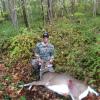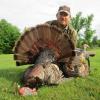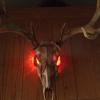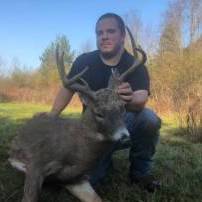food plots Observations and thoughts:What you can do
-
Similar Content
-
By goosifer
I plan on doing 2 to 4 acres of food plots for the first time next year. I have a lot of research I need to do, but at this point I do know I will need some equipment to make it happen. I am hoping I can rent the equipment and attachments I need, or maybe find a nearby farmer I can pay to do it. Two pieces of equipment I do have are a UTV (Kubota RTV900) and a skidsteer (Volvo MC80 86 hp). I don't have a tractor. I know I can rent a brush hog attachment for the skidsteer to clear the overgrown fields. But as far as discing/turning the soil, planting the seeds, embedding the seeds to proper depth, and spraying weed killer, could anyone recommend a way to get this done with particular skidsteer or UTV attachments? I know they sell food plot equipment that can be pulled by the UTV, but I am under the impression that those are pricy and might be too dinky for 2-4 acres. I have yet to come across any "farming" skidsteer attachments. So, anyway to get this done with an UTV and skidsteer, or should I add buying or renting a tractor to the list? TIA.
-
By Hookhunter20
I was wondering how many of you plant and effectively use "kill Plots" on your hunting lands. I have 47 acres in the lower Catskills that I picked up last year. I have to do quite a bit of land management as much of the woods around my fields had been logged about 10 years back and is now an overgrown mess that's great for deer cover but impossible to navigate and see more than 10 yards through. On the bright side the top of the mountain is great and my entire lower field is corn which is farmer managed and my middle and top field is hay. I will be keeping a lot of the under brush for bedding and travel cover but want to cut trails through it to help redirect deer travel. My other thought was to make a few 50-100 yard wide by 100-300 yard long staging or kill plots in and near the cover to catch the deer before they make their way to the big fields at night. After dark the hay fields are absolutely covered in does. My question is how many have used this tactic and what are good seeds to plant, being that I have corn and hay would a late season browse like turnips and radishes be best or an all around option like clovers and oats?
-
By VT Outfitter
I found a old disc harrow this last spring. It was in a hedge row, long forgotten, rusting away doing no good for anyone. It is a 6 disc solid wheel harrow, 3 discs per side, with adjustment levers for disc angle. I had to weld one of the axel supports and grind off 95% of the bolts holding it together as most of them were rotten. I rebuilt the weight boxes that set over the disc's with some lumber, two 2x4's and some bolts to hold them down to the frame. I purchased one 80 pound bag of concrete mix, then poured the concrete into two 2.5 gallon buckets. I put one bucket on each side to help push the disc's down for stiff dirt on new plots, or plots that haven't been harrowed in many yeas. I planted 10+ acres with this newly re built harrow and it worked great. Its a bit tricky to back up but it can be done. I got stuck a few times in soft muddy areas and had to unhook and winch the harrow out. But mostly, it was great as I was able to get to places with the ATV and my re built harrow, where I had to use hand tools in the past. Plus on those plots that were too big for hand tools, and I would haul a tractor with a tiller in, now I can use light weight equipment. What a big time and labor saver all around. I'm very glad I found that old harrow. The price was right too, free. The farmer that owns the property where I found it, is also one of the properties I manage for guiding deer and turkey hunts. He and his wife were so appreciative of the hard work and land improvements, that they would not take a cent. So, keep an eye out for those old pieces of small farming implements. It could be a cheap investment on a tool that is worth is weight in gold for maintaining and building food plots. Good luck!
-
By Pat Rockets
i have an antique grain drill in great condition i just have to get rid of, grain drills planting barley, wheat, oats, rye..etc. its been in the storage shop since i bought the place, and i will never use it. if interested, contact me and i can send you pics of it, or i also have it posted on craigs list buffalo, under farm and garden, this has pics..thanks
-
By BigGuyNY
Being this is my first year with my own property I am interested in putting in a food plot. I have read dozens of articles and have friends that instructed me about soil testing and their opinion on what to plant. My question is about a local renal company that rents what they call a 5' tiller. Is this what I need to turn the soil to get ready for planting?
-
-
Recently Browsing 0 members
No registered users viewing this page.









Recommended Posts
Join the conversation
You can post now and register later. If you have an account, sign in now to post with your account.